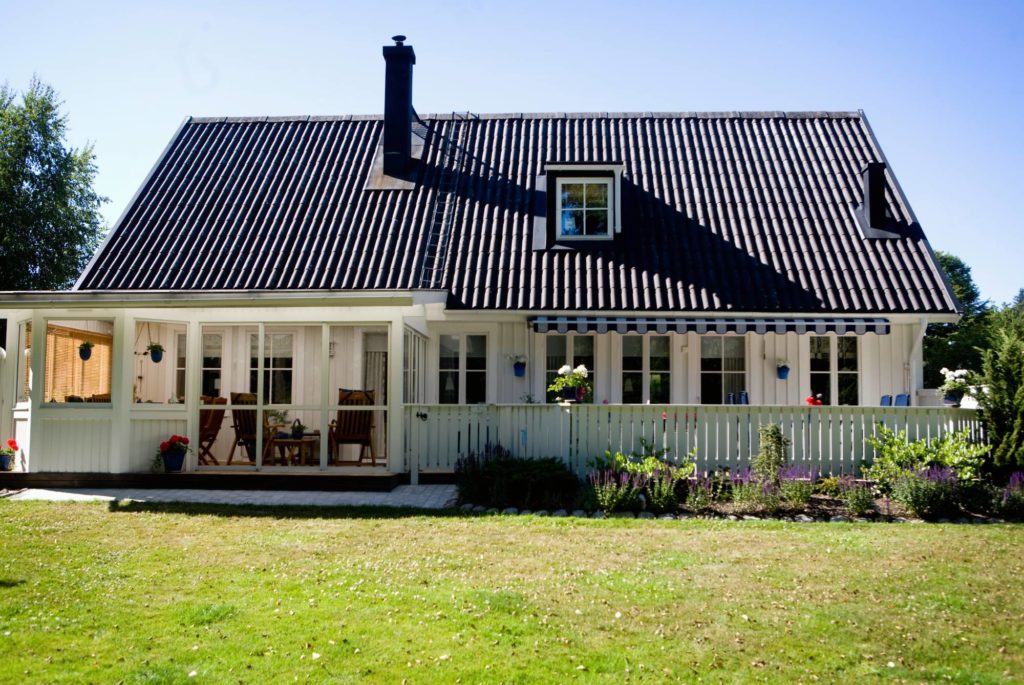In the past, gardening meant endlessly mowing, watering and treating your lawn—often without considering efficiency or their environmental impact. Fortunately, technology has permeated the lawn care industry, providing owners several options for a healthier yard while saving time, money and natural resources. For homeowners seeking expert lawn care solutions in Atlanta, professional services can complement these modern innovations, ensuring your yard stays healthy, sustainable, and beautifully maintained year-round.
With automated and connected systems now available to homeowners, it’s easier than ever to develop sustainable lawns that require less work and fewer inputs over time. Don’t believe us? Keep reading to learn how integrating technology into landscaping leads to smarter and greener choices.
Use robotic lawn mowers to work smarter, not harder
Today’s automatic and smart mowers take landscaping to the next level. A wire-free robotic lawn mower use sensors to navigate randomly within set boundaries, avoiding obstacles and varying routes for even and consistent cuts.
Besides perfectly levelled grass, these devices can reduce mowing time and frequency and support growth via leaf mulching. Smart mowers with flexible scheduling, remote phone access and automatic recharging make mowing practically effortless. Moreover, they’re eco-friendly, helping reduce waste, water and energy usage, and emissions compared to traditional models.
Design your dream gardens digitally
Advances in landscape design software allow homeowners to map out and redesign gorgeous gardens before ever breaking ground. User-friendly apps make it easy to draft plans from thousands of plants and elements like fountains, pathways, sheds, and lighting.
Once your ideal layouts are complete, you can view 3D walkthrough visualisations from all angles to ensure everything works harmoniously. Some programs even estimate costs and identify optimal soil makeup, light conditions and irrigation needs based on your plant selections. By digitally mocking up garden spaces first, you save major time, money and headaches compared to tweaking things after installation.
Infrared technology to spot-spray weeds
Nothing looks worse than a sea of dandelions, but dousing everything in broad-spectrum herbicides carries environmental risks. New electronic wand attachments for sprayers use infrared and other technologies like light detection and ranging (LIDAR) to target only weeds.
This ‘spot-spraying’ method saves chemicals and preserves surrounding grass, plant, and soil life. The bonus? You’ll avoid major landscaping mishaps by accidentally killing your flowers or vegetables.
Save water through smart irrigation
Overwatering lawns wastes precious resources. For example, according to the US Environmental Protection Agency (EPA), about 50% of outdoor water is wasted due to inefficient watering methods and systems. On the other hand, underwatering causes brown patches and bare spots, which could reduce a property’s curb appeal.
New irrigation controllers address both issues via weather data, moisture sensors placed in soil, leak detectors and flow meters. These devices tell systems when and how much to water based on real-time conditions and can automatically shut off when issues arise. Even better, you can monitor and control everything remotely from your phone.
Use fertigation
Plants need essential nutrients, particularly nitrogen, potassium and phosphorus, to look healthy and lively. To ensure they’re getting enough nutrients, fertiliser application is imperative. This is where fertigation comes in.
This is a process of dissolving fertilisers and delivering the nutrient-rich mixture through an irrigation system. This method fulfils two useful applications in one go while reducing outdoor water consumption. Automated dispensers allow homeowners to fill the hopper with their preferred fertiliser and program the wi-fi-enabled device to release set amounts at specific intervals.
Sensors in the ground monitor nutrient levels and communicate with the dispenser to ensure proper feeding for lush growth. This eliminates guesswork while customising delivery based on lawn requirements.
Smart outdoor lights for aesthetic and functional uses
Supplementing sun exposure with artificial lighting is an emerging trend for densely shaded areas or times when sunlight is limited, like winter. Research has shown that light-emitting diode (LED) lights can positively impact plant growth and yield.
New professional-grade stand-alone lighting rigs use LED bulbs calibrated specifically to the grass’s growth spectrum. This tech boost helps turn brown grass green during darker months.
Homeowners can also incorporate landscape lighting into existing systems to illuminate gardens or features. Some models are integrated with motion detection and surveillance systems so you can monitor your outdoor spaces even when you’re out and about.
IoT for keeping a tight watch over your garden
The Internet of Things (IoT) has revolutionised several industries, including healthcare and manufacturing. But this technology is continuously expanding, and so are its applications in lawn care.
Many outdoor smart devices now integrate with voice assistants for hands-free landscaping. From mowers to irrigation systems, you can start with a spoken command to adjust certain functionalities without touching a controller, leading to effortless lawn maintenance. The technology even enables creating schedules, asking questions about equipment status or conditions and more to streamline oversight.
Specialised sensors monitor key variables that impact vegetable gardens and flower beds for you. These easy-to-install devices keep tabs on light, temperature, soil moisture and fertility levels, then send the data to an app. This allows you to take better care of plants by identifying issues early, before they become visible.
Reap the benefits
New tools and technologies allow us to understand our lawns’ needs better so we can customise care. Sensor systems analyse certain data to offer specific recommendations for irrigation, fertilisation and more. This takes the guesswork out of lawn maintenance, so we don’t overwater, overfeed or apply unnecessary pest treatments.
Similarly, automated systems allow owners to manage their lawn care systems remotely. The hands-off convenience appeals to busy consumers who are able to monitor their yard status round the clock. Overall, embracing the available solutions above enables growing a greener landscape more sustainably.

